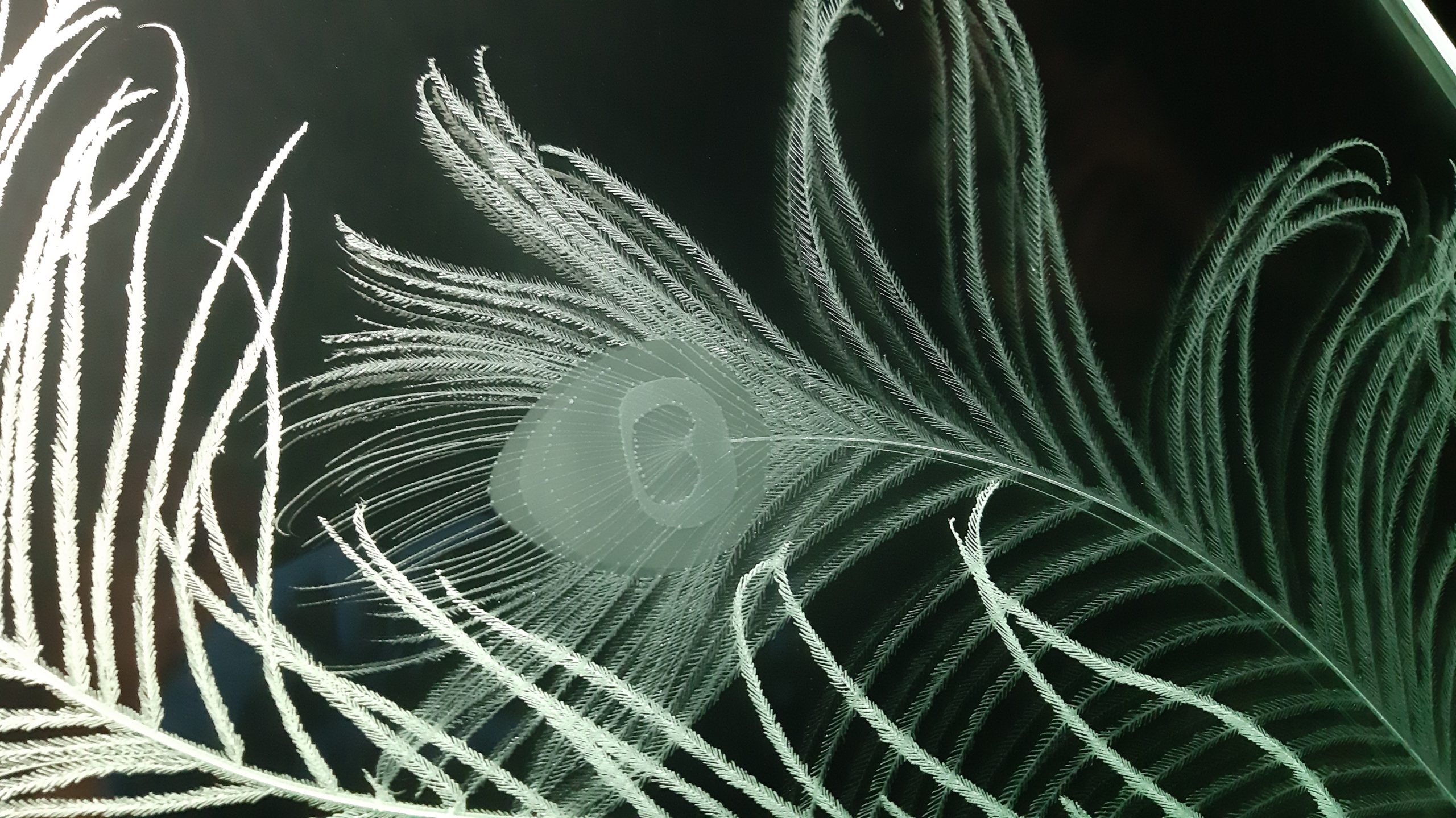
30 May ENGRAVING AND SANDING. THE HARDNESS THAT SCRATCHES AND TRANSFORMS THE SURFACE IN IMPALPABLE SOFTNESS.
When I think of the technique of engraving and sandblasting, I spontaneously associate it with an idea of fusion between male and female energy. Through hard and pointed tools and abrasive sands, in fact, the technique allows to create shapes surprisingly soft and sinuous, delicate and impalpable. It is a unique alchemical process in which opposite aspects are combined to give life to totally new forms and unexpected textures. I am still deeply fascinated by this aspect.
At a technical level, engraving involves the removal of part of the material from the surface of the glass in order to create eternal shapes and decorations, without using colour. Depending on the instrument used, the carving is distinguished from sandblasting, which involves the use of abrasive sands.
The increase in the depth of the incision leads, finally, to the realization of the bas-relief.
Just as vision is the principal sense that allows us to perceive the three-dimensionality of objects, so these techniques are at their best on smooth, thick and transparent glass, creating all-round effects through the engravings.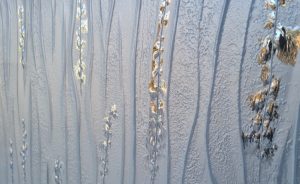
Over time I have learned about glass in its fragility, elasticity, rigidity and robustness. Apparently opposite features that make this material so enigmatic and mysterious. In my experience, I have pushed myself to work it at the limit of its resistance, without however reaching a “breaking point”.
And it is precisely when you know well your partner that you know how far you can push yourself in the constructive confrontation, without ever exceeding, otherwise the relationship will break.
So rigidity and softness, through the technique of engraving and sandblasting, can be combined in a stable and soft balance.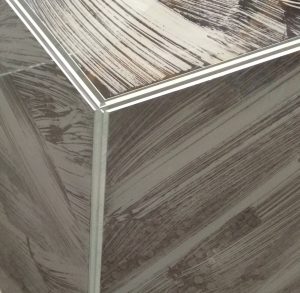
Just as in some works, in which I find a sinuous female hand that covers, with brushstrokes of sand, the austere masculine plan giving life to a fruit of rare balance.
A hard and transparent matter clothed in veils that let you glimpse a possible and surprising content.
Or, in others where as many floating veils let rediscover the pleasure of sight, with eyelids wide open.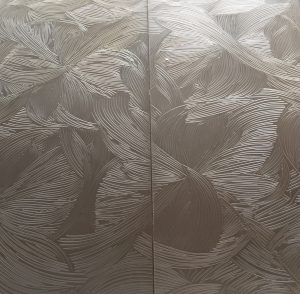
The delicacy, here, is the result of slowness. With these long and slow sandblasting gestures you reach a unique soft finish, which only patience – and not the desire to finish – can bring to completion.
In other works, it is a hard and metallic instrument that give life to so much elegance and transparency. How it can do so, it is still a mystery to me.
A secret hidden from sight that changes and adapts itself in the depths of an ocean of transparent and dark matter.
And, in this deep abyss, you can know evanescent life-forms that appear and then disappear in the dark shadows.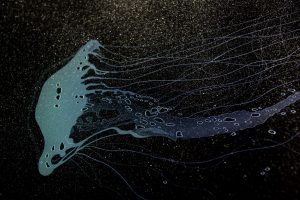
Moments stolen from a life hidden in the darkness, yet pulsating with soft and delicate vitality.
It is the diamond tip that creates these ectoplasmic marine creatures, vague though concrete.
And, rising to the surface, it is water this time flowing between the diamond points.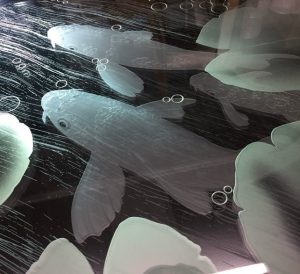
The latter are left with the task of imprinting on the bare and transparent surface the mark of its passage.
The movement that allows the completion of the technique is conscious but distracted; it is that of a hand looking for the perfect sign without ever recognizing it.
Through him the forms come to life and glide sinuously into the imagination that has become reality.
The technique of engraving and sandblasting can be used to print images, for the decoration of mirrors and lamps but its ultimate destinations are: the door, the partition panel, the coatings. Installations that give greater importance to the three-dimensionality, its essential characteristic and symbol of the contrast between the forces operating in it.
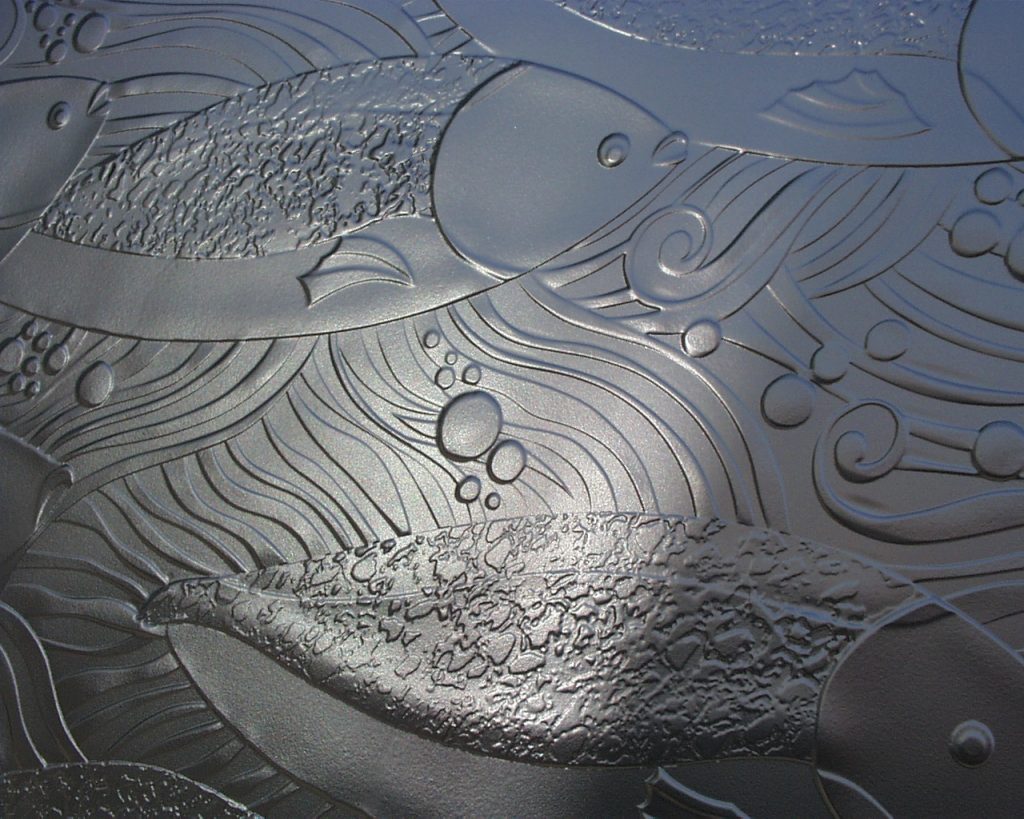
“For the craftsmanship it requires and the refinement of the results, this technique is closely related to classical sculpture.”
Vittorio Benvenuto